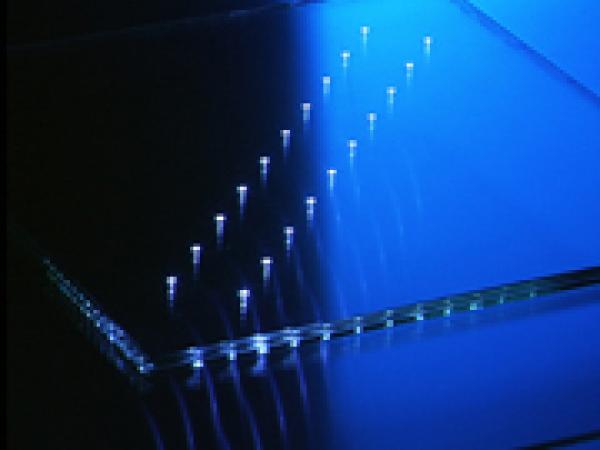Until recently, LEDs were considered impractical for widespread use in large environments but the technology has improved dramatically. Some years ago LEDs were available in only red and green. Blue LEDs appeared in the 1990s and the array of color broadened a lot. These three primary colors combine to produce an unlimited unlimited variety of effects.
Moreover, LED lighting can be directly controlled, digitally, meaning that there are almost unlimited effects that can be produced, including ocean-like waves of light and colorful rainbow-like patterns.

That's why LEDs are popping up every where in home decorating these days. The power supply to the LEDs is provided via virtually invisible conducting paths on the glass. Since they use few watts, LEDs can be solar or battery powered, which makes them appropriate to situations where uninterruptible power is important.
.jpg)

Date: 4 November 2005
The use of transparent glass in conducting electricity using LEDs, short for light emitting diodes, is increasing. LED's are approaching the lifespan of standard building materials, making it cost effective to embed them directly in structural components and architectural finishes.
 600450
600450
www.us.schott.com
2005-11-04T12:00:00
LED Glass
glassonweb.com 
















